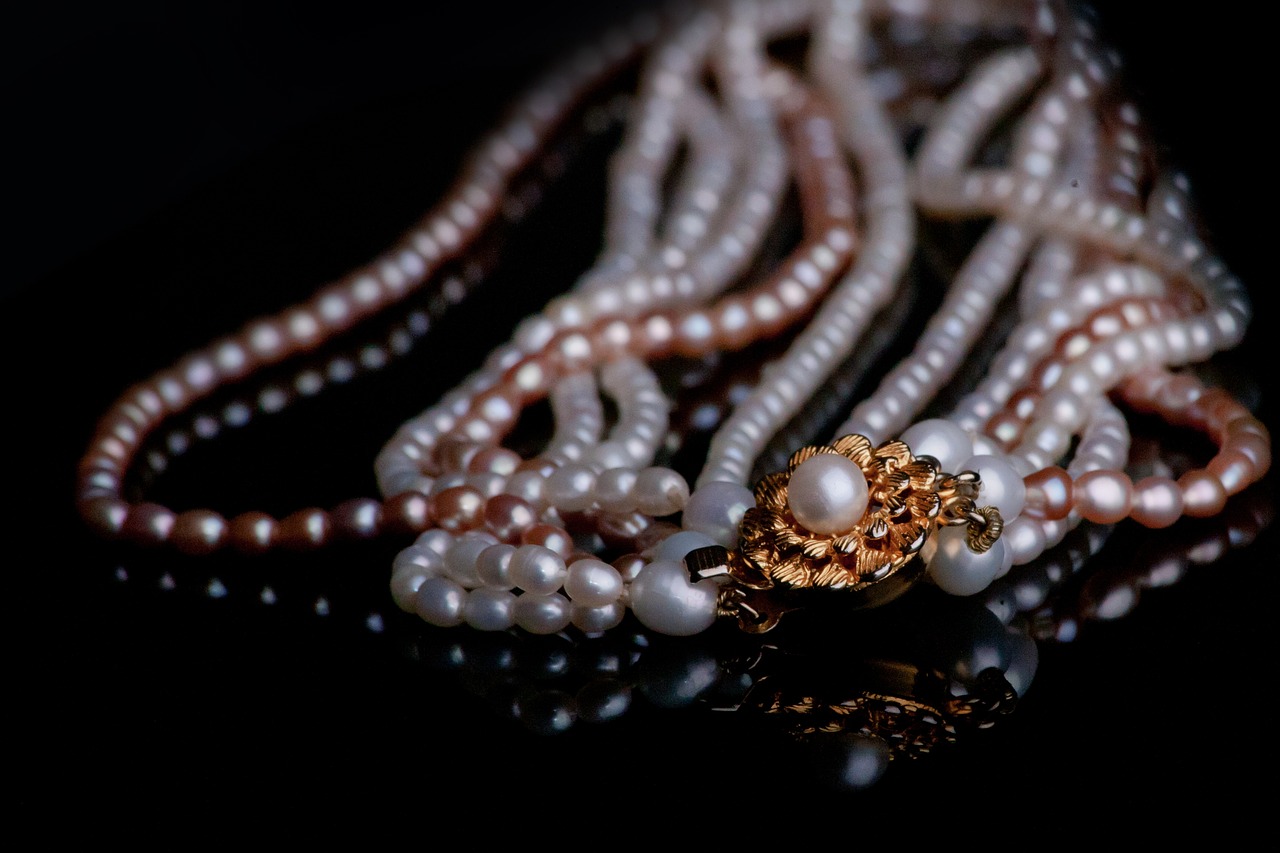Necklaces have been cherished adornments throughout history, serving as symbols of status, love, and personal expression. Yet, amidst their intricate designs, there’s a small but crucial element that often goes unnoticed – the clasp. The clasp of a necklace is like a hidden guardian, securing the precious necklace around your neck. However, what is the clasp of a necklace called? In the world of jewelry, you may encounter a variety of names, such as toggle, lobster, hook, or magnetic clasp. In this comprehensive exploration, we will delve into the diverse universe of necklace clasps, examining their characteristics, functions, and the terminology associated with them.

The Anatomy of a Necklace Clasp
Before we delve into the specific names for necklace clasps, it’s essential to understand the basic components of these tiny yet vital elements. Necklace clasps consist of two main parts: the fastener and the jump ring.
- Fastener: The fastener is the part of the clasp that opens and closes to secure the necklace. It typically has a mechanism that enables you to connect or disconnect the clasp easily. The type of mechanism varies, depending on the specific clasp design.
- Jump Ring: The jump ring is a small metal loop attached to one end of the necklace. This loop serves as an anchor point for the fastener to attach to, creating a complete closure.
Now, let’s explore the various names and types of necklace clasps commonly found in the jewelry world.
Toggle Clasp: A Timeless Classic
The toggle clasp is a classic design known for its simplicity and functionality. It consists of two parts – a T-shaped bar and a circular or oval ring. The bar is inserted through the ring to secure the necklace. The design is elegant and understated, making it a popular choice for both traditional and contemporary jewelry pieces.
One of the primary advantages of a toggle clasp is its ease of use. It doesn’t require intricate dexterity to fasten, making it an excellent choice for individuals with limited fine motor skills. Additionally, toggle clasps can be crafted from various materials, including precious metals like gold and silver or more affordable options like stainless steel or plastic. This diversity in materials allows for versatile design possibilities.
Lobster Clasp: The Versatile Choice
The lobster clasp is a widely recognized and versatile type of necklace clasp. Its name is derived from its resemblance to a lobster’s claw. This clasp consists of a small lever on one side and an oval-shaped loop on the other. To fasten the necklace, you need to slide the lever into the loop, and a spring-loaded mechanism ensures a secure closure.
Lobster clasps are known for their durability and reliability. They are commonly used in necklaces, bracelets, and even as fasteners for small accessories like keychains. Their compact design allows them to hold various necklace styles securely.
Hook Clasp: A Twist of Elegance
A hook clasp is another popular option for necklaces. This type of clasp is often used in handmade and artisanal jewelry due to its unique and intricate design. It typically consists of a hook-shaped fastener and a loop or eyelet on the opposite end.
The hook clasp offers an added touch of elegance to necklace designs. It’s known for its vintage appeal, making it an excellent choice for those who appreciate classic and timeless jewelry styles. However, hook clasps may require more dexterity to fasten compared to other clasp types, and they are often used for necklaces with heavier pendants.
Magnetic Clasp: The Modern Solution
Magnetic clasps have gained popularity in recent years due to their ease of use and contemporary design. These clasps use the power of magnets to secure the necklace. They consist of two parts: one with a magnet and the other with a metal piece that is attracted to the magnet, creating a strong connection.
The main advantage of magnetic clasps is their convenience. They are effortless to open and close, making them an excellent choice for individuals who may have difficulty with traditional clasps. However, it’s important to note that magnetic clasps may not be suitable for all necklace designs, particularly those with heavy pendants, as the magnetic force may not be strong enough to hold the necklace securely.
Barrel Clasp: A Secure Twist
The barrel clasp is a twist-action clasp commonly used in necklaces and bracelets. It features a cylindrical shape with two parts – one that screws into the other to secure the jewelry. Barrel clasps are favored for their security, as they are less likely to accidentally open compared to other types of clasps.
These clasps are particularly useful for expensive or sentimental jewelry pieces where security is a primary concern. The twisting action required to open and close a barrel clasp ensures that the necklace remains firmly fastened, reducing the risk of accidental loss.
S-Hook Clasp: A Symbol of Strength
The S-hook clasp, as the name implies, resembles the letter ‘S.’ It’s a simple yet robust design that consists of a curved hook on one end and an open loop on the other. To secure the necklace, you hook the curved end into the loop.
S-hook clasps are appreciated for their strength and reliability. They are often used in heavier necklaces or ones with substantial pendants. Additionally, this type of clasp is commonly seen in tribal and ethnic jewelry designs, adding an authentic and rustic feel to the piece.
Box Clasp: A Touch of Elegance
Box clasps are known for their elegant and decorative appearance. They feature a rectangular or square-shaped design with a locking mechanism that clicks into place. These clasps often serve as both a functional and decorative element of a necklace.
Box clasps are frequently used in high-end and formal jewelry pieces, such as pearl necklaces or fine gemstone jewelry. The intricate design of the clasp complements the overall aesthetic of the necklace, enhancing its visual appeal.
Fishhook Clasp: A Nautical Allure
The fishhook clasp, as its name suggests, resembles the shape of a fishing hook. It is a unique and decorative clasp style that adds a touch of nautical allure to necklaces. This clasp typically features a delicate hook and an eyelet, similar to the hook clasp.
Fishhook clasps are favored for their artistic and thematic elements. They are often used in jewelry designs that draw inspiration from marine life or coastal motifs, making them a popular choice for beach-themed jewelry.
Slide Lock Clasp: Sleek and Streamlined
The slide lock clasp is a sleek and streamlined option that offers a modern look and exceptional security. This type of clasp consists of a rectangular or square slide that clicks into place when inserted into a corresponding groove. The smooth and unobtrusive design of slide lock clasps complements contemporary and minimalist jewelry styles.
Slide lock clasps are prized for their reliability and ease of use. They provide a secure closure while maintaining a clean and unobtrusive appearance, allowing the focus to remain on the necklace itself.
Choosing the Right Clasp for Your Necklace
Selecting the appropriate clasp for your necklace is crucial, as it not only affects the functionality of the jewelry but also complements its overall design. Consider the following factors when choosing a clasp for your necklace:
- Necklace Style: The style of your necklace, including its length, weight, and design, will influence the choice of clasp. Light and delicate necklaces may benefit from a simple clasp, while heavier necklaces with pendants may require a more robust option.
- Durability: Consider the material and durability of the clasp, especially if the necklace will be worn frequently. Precious metals like gold and silver offer both durability and aesthetic appeal.
- Ease of Use: Think about the ease of opening and closing the clasp. If the wearer has limited fine motor skills, a magnetic or lobster clasp may be the best choice.
- Aesthetic Appeal: The clasp should complement the overall design of the necklace. Classic necklaces may benefit from a toggle or hook clasp, while modern or minimalist pieces may suit a slide lock or magnetic clasp.
- Security: For valuable or sentimental jewelry, prioritize a secure clasp like a barrel or box clasp to reduce the risk of loss.
Conclusion
The clasp of a necklace is a small but significant component that plays a crucial role in the functionality and aesthetics of the jewelry. While there are various names for necklace clasps, including toggle, lobster, hook, magnetic, barrel, S-hook, box, fishhook, and slide lock clasps, the choice of clasp should be based on the specific requirements of the necklace and the preferences of the wearer.
Whether you opt for a classic toggle clasp, a versatile lobster clasp, an elegant hook clasp, a modern magnetic clasp, or any other type, the clasp’s role is to safeguard your cherished necklace, allowing you to wear it with confidence and style. By understanding the diverse terminology and designs of necklace clasps, you can make an informed choice and ensure that your necklace remains both beautiful and secure.





